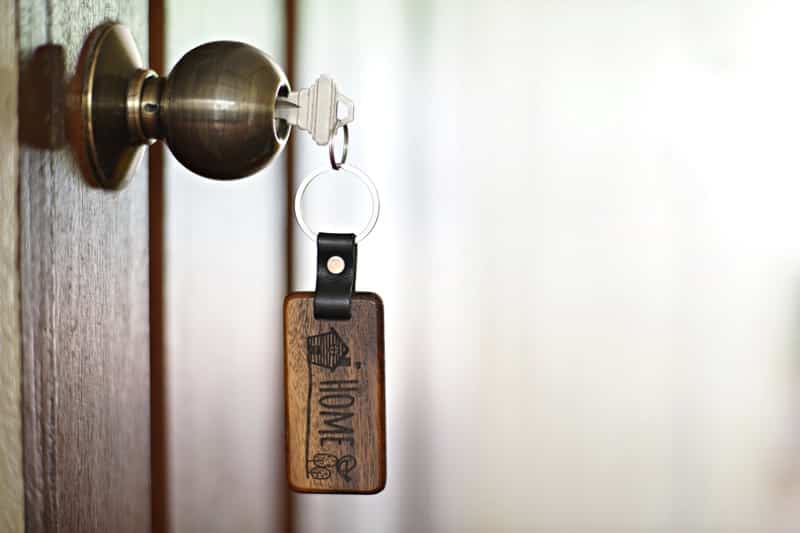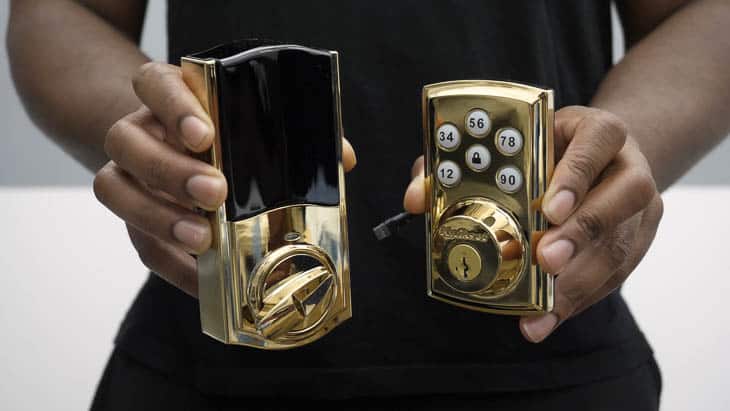House Keys: Where To Keep Them, Where To Hide Them
Doors play an important role in home security, but so do the keys that open them. Most of us have at least two sets of keys – the set we use everyday and the spare set we stash somewhere in case we misplace our everyday keys. While it’s true that burglars use spare keys to gain access to their target homes, both your everyday and spare keys need safekeeping. So today is all about keys: Where should you keep them? Where should you hide them?

Where Should I Leave My Everyday Keys?
When it comes to your everyday keys, you want to leave them in the same place every day. That way, you always know where they are, both for ease and convenience. Preferably, you should place these keys on hooks where small children can’t grab them, should that be an issue in your house.
To make sure you remember your keys every morning, put them next to something you need before you leave. Preferably, something that’s always in the same spot. For instance, you could put them on a key hanger above your shoes so it’s looking you in your face as you get ready to go. This also prevents them from getting lost in a messy house.
Here are a few pointers to keep in mind when choosing a place to put your everyday keys:
- Away from windows: Your everyday keys should remain inside your home when they are not on you. That’s a no-brainer. But you also have to make sure that an intruder can’t fish it out of a window.
- Make it hard to swipe: Instead of placing your keys in a bowl, consider placing your everyday set on a hook. Or better yet, use a carabiner clip. That way, it won’t be so easy for party guests, pizza delivery guys, or home service providers to swipe them.
- Use a key locator: Misplacing your keys is a huge pain in the neck, so make sure you have a way to locate them. Apple’s AirTag or any similar technology will do the trick. As a bonus, these devices can also aid a forensic investigation if you’re ever the victim of a crime.1
Where Should I Leave My Spare Keys?
If you need to let family members, babysitters, or dog walkers in the door, you might decide to leave a spare key out. However, burglars can and will also use that key.2 There are a few basic do’s and don’ts when it comes to storing your spare keys to ensure only your intended recipient uses it.
Where Not To Store Your Spare Keys
- Under a door mat: Don’t leave your spare key under the mat. It’s a cliché, and probably the first place a thief would look. All in all, it’s too close to the door and too easy to check.
- Above the door lintel: Don’t stash your spare key above the door lintel. All a thief has to do to find it is run his hand over the lintel and see if he feels a key. Like the doormat, it’s too easy and too close to the door.
- Under a flower pot: Don’t hide your spare key under a flower pot right near the door. Again: it’s too close to the door, and too obvious. What’s convenient for you is also convenient for a crook, unfortunately.
- In a fake rock: Don’t use a fake rock. Most of them look fake, and they’re a dead giveaway.
- In your wallet: Don’t put a spare key in your wallet. If your wallet is stolen or lost, your license and key will be in it. That means that someone could not only have your address, but also a key to enter your home. Without a swift resolution, you’ll probably find yourself changing locks as well as credit cards.
Where To Store Your Spare Keys
- With a neighbor: Just leave a key with a neighbor. This is the most simple and safe way to keep your key safe, as long as you trust your neighbor, of course.
- In a magnetic keytainer on your car: Leave a magnetic keytainer on your car. Most burglaries happen during the daytime hours when you’re not home. And if you’re not home, neither is your car (most of the time, anyway).
- In a magnetic keytainer at your neighbor’s: Leave a magnetic keytainer at the neighbor. No burglar is going to suspect that the key in the keytainer belongs to someone in another house.
- In a fake sprinkler head: Use a fake sprinkler head. This obviously only works if you have a sprinkler system.
- In the woods: If your property has surrounding woods, nail a key to a tree in the dense forest. It’s a bit strange, but most burglars won’t go searching through the trees for keys nailed to them.
- In a lockbox: Consider a modern lockbox with reinforced steel construction and a 4-digit combination. Though more obvious than other methods, a stranger taking an extended amount of time to crack open a lockbox looks awfully suspicious. This may not be the best idea when you’re away on vacation, but it can still do the trick for trusted guests.
- In your grill, doghouse, and more: Good places for keytainers, if you must use them, include way up under your grill, in your doghouse, or simply placed in an inconspicuous spot.
- Spare backdoor key: You can outsmart burglars by leaving a spare that unlocks your back door, rather than your front door like most people do. Even if someone finds it, their first instinct would be to use it on the front door, which obviously won’t work.
Alternative Options
A regular old lock and key doesn’t always cut it. These days, technology in smart locks and fortified doors can add more security to the bones of your home, preventing intruders from, well, intruding.
Smart Locks

Then there’s the conundrum: is it time to get a smart lock? It’s up to you, as price is still a big obstacle to many users (smart locks can cost around $200 each). It also seems unlikely that most homeowners will be putting a smart lock on every door, as that could get pretty pricey. But some burglars likely won’t even want to bother dealing with a smart lock due to alarm concerns (Will it set off alarms? Will it notify the homeowner?), so it might be worth considering.
The biggest advantage of smart locks? You can open them without a key, meaning that you never have to worry about losing your keys again. Plus, most smart locks let you unlock them remotely through an app, so you can let in people even when you’re not home. You can also create temporary passcodes for guests, if you don’t want to be bothered. Then, you can check your smart lock’s activity logs to track when guests come and go.
Fortified Doors
You can have the strongest lock in the world, but if it’s attached to a weak door, a burglar can still get in with ease. We recommend trading your wooden exterior door for steel or composite models. For additional security, you can also install strike plates made of heavy-duty metal and secure them with 3-inch screws. These upgrades typically cost between $500 and $1,500 per door, but significantly increase resistance to forced entry.
To State The Obvious
Oh, and most importantly: locks don’t work unless you use them. That’s why every year there are reports of burglars entering homes through unlocked doors and windows.3 So don’t forget to lock your door when you come and go; otherwise, you’re leaving your house completely unprotected.
Pro Tip: Set a daily reminder on your phone to check that all doors are locked before bedtime. This simple habit takes less than a minute but provides peace of mind and enhanced security throughout the night.
-
Forensic Science International: Digital Investigation. (2023). Every step you take, I'll be tracking you: Forensic analysis of the tile tracker application. https://www.sciencedirect.com/science/article/pii/S2666281723000689
-
International Association of Certified Home Inspectors. (Retrieved 2025). Burglar-Resistant Homes. https://www.nachi.org/burglar-resistant.htm
-
CBS News. (2025). West Virginia University issues campus warning following report of burglaries. https://www.cbsnews.com/pittsburgh/news/west-virginia-university-campus-warning-burglaries/

